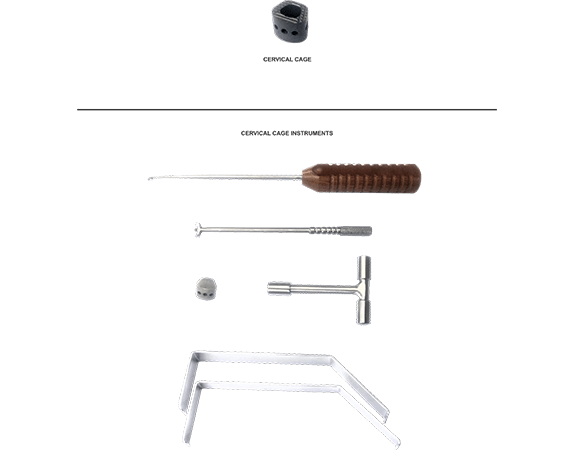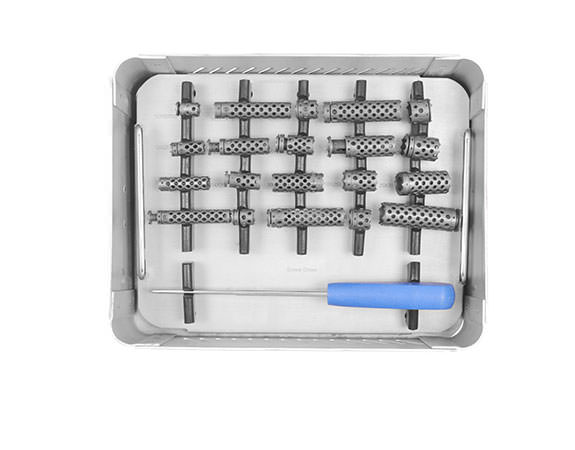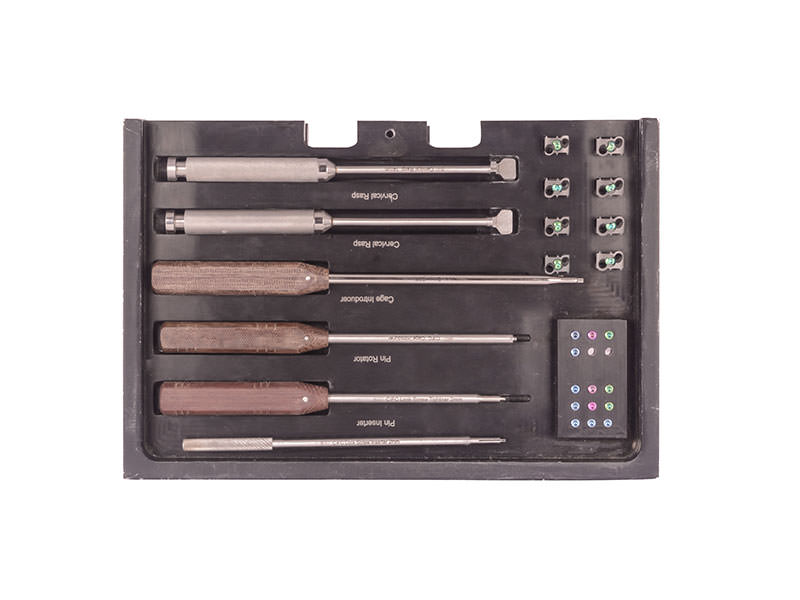Pegasus Anterior Cervical Plate
Cervical plate is designed to provide stability during spinal fusion, which takes place during fusion between adjacent vertebrae.
The Pegasus Cervical plate offers a quarter turn locking mechanism designed to prevent the screws fixed in the spinal plate from backing out or loosening during fusion. The plate design offers visibility to the surgeon in the C-arm during surgery.
The plate is low profile, with self-drilling and locking options. It is also pre-curved to maintain lordosis. Multi-level plates are also available for options for corpectomy as well as discectomy.
- Cervical Plate System is intended for anterior cervical intervertebral body fixation.
- This system is indicated for patients in whom stability is desired following anterior cervical fusion for the indications listed below –
- cervical spondylosis
- Trauma
- Fracture
- Post-traumatic kyphosis or lordosis
- Tumour
- Degenerative disc disease (defined as discogenic pain with degeneration of the disc)
EMT Double-Start Pedicle Screws
The EMT pedicle screws are used for spinal fusion of two large vertebrae. The stability is provided through a construct of 4 screws and 2 rods. A spinal fixation device stabilizes an area of the posterior spine while allowing for a significant range of motion and limiting the compression of the affected vertebrae. The screws can also take load off a particular fracture body, and transfer the load to non-fractured or strong body.
The EMT pedicle screws are double start self-tapping (One turns corresponds to two threads to save time) & are available for 60 degree variable angles. The EMT pedicle screws are top-loading, and are also available in mono, and long-arm variations.
The screws are used to treat deformity and immobilize the spine for spinal fusion.
- Vertebral Fracture
- Vertebral deformity
- Vertebral Compression
- Degenerative vertebral Disorder (such as Spondylolisthesis)
PLIF/TLIF cages
These procedures incorporate radial discectomy, endplate preparation, and inter-body fusion.
PLIF stands for Posterio-lateral interbody fusion. In the PLIF technique, the incision is taken from the patient’s back (posterior). The PLIF cages are bullet shaped.
TLIF stands for Transforaminal Lumbar Interbody Fusion. The TLIF technique involves a similar approach as the PLIF approach but more from the side of the spinal canal through a midline incision. The TLIF cages are kidney shaped.
Emt Tlif & plif cage instruments set is equipped with all the necessary instruments including curretes, shavers, nurve root retractors, osteotom, funnale & screw distractor.
- Reconstructions Non-Locking are intended for fixation of various small bones
- They are also for use in fixation of periprosthetic fractures Pelvis, Radius, Ulna, Fibula, Distal , Humerus, Distal tibia.
Milstone Cervical Fusion Cage
The milstone cervical fusion cage is a combination of plate and cage to provide stronger support than the Pegasus Cervical Plate. It helps to preserve the natural anatomic profile, while providing anterior column support and stability.
The Milstone Cervical cage offers low profile instrumentation for ease and convenience during surgery.
- Instability
- Myelopathy
- Osteomyelitis
- Vertical body tumors
- Post-laminectomy Kyphosis.
EMT Cervical cages
The EMT Cervical cages feature an axial window design for bone graft or bone graft substitute, to allow for fusion between two vertebrae. The cervical cages also feature pyramidal serration for better anchorage in the adjacent vertebral endplates. The implant has superior and inferior grooves that provide resistance to implant migration towards the anterior side, and thus help in maintaining stability.
- Instability
- Myelopathy
- Osteomyelitis
- Vertical body tumors
- Post-laminectomy Kyphosis

EMT Diamond cut mesh cages
Emt mesh cases are available in diamond cuts and different Dia & lengths.
These mesh cages are used in surgeries involving corpectomy procedures. The main function of these cages is to stabilize the levels in which the corpectomy is performed.
- Compression in the spinal cord causing pain and numbness of arms and legs of the patient. The compression may be caused by the intervertebral body, disc, or ligaments. To relieve the compression a corpectomy procedure may be performed.
- Deformed or fractured vertebral body.
- Degenerative disc disease
- Spinal Instability
- Tumors

EMT Atlanta cervical posterior fixation system
Posterior Cervical Fusion is the term used for surgically mending two or more cervical bones together via incisions from the posterior side. Bone graft may be used along the sides of the bones to allow for spinal fusion. The EMT Atlanta screws are used to provide instant stability, and also increase the fusion rate (Percentage of successful fusion).
The set also contains the following implants –
- Occipital plate and fixation options
- Pre-curved rod
- Threaded rod
- Posterior cervical hooks
- Cervical Instability
- Occipital Cervical fixation
- Cervical Myelopathy
- Spondolysis
- Osteomylitis
- Vertebral body tumors
- Cervical Kyphosis Correction

